Experimental and Theoretical Analysis of a Linear Focus CPV/T System for Cogeneration Purposes
Abstract
:1. Introduction
2. Materials and Methods
2.1. CPV/T System Description
2.2. Modelling of the Linear Focus CPV/T System
3. Results and Discussion
4. Conclusions
Funding
Conflicts of Interest
Abbreviations
| A | area (m2) |
| C | concentration factor |
| CPV | Concentrating Photovoltaic |
| CPV/T | Concentrating Photovoltaic and Thermal |
| c | specific heat (kJ/kgK) |
| DNI | Direct Normal Irradiance (W/m2) |
| E | energy (kWh) |
| heat transfer coefficient (W/m2K) | |
| InGaP/InGaAs/Ge | indium-gallium-phosphide/indium- gallium-arsenide/germanium |
| K | thermal conductance (W/m2K) |
| mass flow rate (kg/s) | |
| n | number |
| RMS | root mean squared |
| T | temperature (K) |
| TJ | Triple-Junction |
| V | volume (m3) |
| x | space (m) |
| Greek symbols | |
| α | absorptivity coefficient |
| η | efficiency |
| θ | time (s) |
| ρ | density (kg/m3) |
| Subscripts | |
| c | cell |
| e | environment |
| el | electrical |
| f | fluid |
| i | internal |
| ins | insulator |
| mod | module |
| opt | optic |
| t | tube |
References
- Zsiborács, H.; Baranyai, N.H.; Vincze, A.; Háber, I.; Pintér, G. Economic and Technical Aspects of Flexible Storage Photovoltaic Systems in Europe. Energies 2018, 11, 1445. [Google Scholar] [CrossRef]
- Pintér, G.; Baranyai, N.H.; Wiliams, N.; Zsiborács, H. Study of Photovoltaics and LED Energy Efficiency: Case Study in Hungary. Energies 2018, 11, 790. [Google Scholar] [CrossRef]
- Zsembinszki, G.; Solé, A.; Barreneche, C.; Prieto, C.; Inés Fernández, A.; Cabeza, L.F. Review of Reactors with Potential Use in Thermochemical Energy Storage in Concentrated Solar Power Plants. Energies 2018, 11, 2358. [Google Scholar] [CrossRef]
- Sharaf, O.Z.; Orhan, M.F. Concentrated photovoltaic thermal (CPVT) solar collector systems: Part II—Implemented systems, performance assessment and future directions. Renew. Sustain. Energy Rev. 2015, 50, 1566–1633. [Google Scholar] [CrossRef]
- Castaneda, M.; Zapata, S.; Aristizabal, A. Assessing the Effect of Incentive Policies on Residential PV Investments in Colombia. Energies 2018, 11, 2614. [Google Scholar] [CrossRef]
- Xu, Z.; Kleinstreuer, C. Concentration photovoltaic–thermal energy co-generation system using nanofluids for cooling and heating. Energy Convers. Manag. 2014, 87, 504–512. [Google Scholar] [CrossRef]
- Renno, C. Optimization of a concentrating photovoltaic thermal (CPV/T) system used for a domestic application. Appl. Therm. Eng. 2014, 67, 396–408. [Google Scholar] [CrossRef]
- Kandilli, C. Performance analysis of a novel concentrating photovoltaic combined system. Energy Convers. Manag. 2013, 67, 186–196. [Google Scholar] [CrossRef]
- Renno, C.; Petito, F. Choice model for a modular configuration of a point-focus CPV/T system. Energy Build. 2015, 92, 55–66. [Google Scholar] [CrossRef]
- Xu, G.; Zhang, X.; Deng, S. Experimental study on the operating characteristics of a novel low-concentrating solar photovoltaic/thermal integrated heat pump water heating system. Appl. Therm. Eng. 2011, 31, 3689–3695. [Google Scholar] [CrossRef]
- Solargis.com. Solar Resource Maps and GIS Data for 180+ Countries. Available online: https://solargis.com/maps-and-gis-data/download/world (accessed on 18 October 2018).
- Renno, C.; Petito, F.; Landi, G.; Neitzert, H.C. Experimental characterization of a concentrating photovoltaic system varying the light concentration. Energy Convers. Manag. 2017, 138, 119–130. [Google Scholar] [CrossRef]
- Renno, C.; De Giacomo, M. Dynamic simulation of a CPV/T system using the finite element method. Energies 2014, 7, 7395–7414. [Google Scholar] [CrossRef]
- Kerzman, T.; Schaefer, L. System simulation of a linear concentrating photovoltaic system with an active cooling system. Renew. Energy 2012, 41, 254–261. [Google Scholar] [CrossRef]
- Rodrigo, P.; Fernández, E.F.; Almonacid, F.; Pérez-Higueras, P.J. Review of methods for the calculation of cell temperature in high concentration photovoltaic modules for electrical characterization. Renew. Sustain. Energy Rev. 2014, 38, 478–488. [Google Scholar] [CrossRef]
- Calabrese, G.; Gualdi, F.; Baricordi, S.; Bernardoni, P.; Guidi, V.; Pozzetti, L.; Vincenzi, D. Numerical simulation of the temperature distortions in InGaP/GaAs/Ge solar cells working under high concentrating conditions due to voids presence in the solder joint. Sol. Energy 2014, 103, 1–11. [Google Scholar] [CrossRef]
- Mahmoudinezhad, S.; Rezania, A.; Cotfas, D.T.; Cotfas, P.A.; Rosendahl, L.A. Experimental and numerical investigation of hybrid concentrated photovoltaic-Thermoelectric module under low solar concentration. Energy 2018, 159, 1123–1131. [Google Scholar] [CrossRef]
- Triple-Junction Solar Cell for Terrestrial Applications. CTJ photovoltaic cell, Datasheets Emcore September 2012. EmcoreCorporation. Available online: https://assets.componentsense.com/images/pdfs/89821_2_7da3431c2dc0e81925db4c73523bf624.pdf (accessed on 28 June 2018).
- Ferrera Cobos, F.; Valenzuela, R.X.; Ramírez, L.; Zarzalejo, L.F.; Nouri, B.; Wilbert, S.; García, G. Assessment of the impact of meteorological conditions on pyrheliometer calibration. Sol. Energy 2018, 168, 44–59. [Google Scholar] [CrossRef]
- Mittelman, G.; Kribus, A.; Dayan, A. Solar cooling with concentrating pho-tovoltaic/thermal (CPVT) systems. Energy Convers. Manag. 2007, 48, 2481–2490. [Google Scholar] [CrossRef]
- Renno, C.; Petito, F. Triple-junction cell temperature evaluation in a CPV system by means of a Random-Forest model. Energy Convers. Manag 2018, 169, 124–136. [Google Scholar] [CrossRef]
- Renno, C.; Petito, F. Experimental and theoretical model of a concentrating photovoltaic and thermal system. Energy Convers. Manag. 2016, 126, 516–525. [Google Scholar] [CrossRef]
- Aprea, C.; Renno, C. An air cooled tube-fin evaporator model for an expansion valve control law. Math. Comput. Model. 1999, 30, 135–146. [Google Scholar] [CrossRef]
- Mwesigye, A.; Huan, Z.; Meyer, J.P. Thermodynamic optimization of the performance of a parabolic trough receiver using synthetic oil–Al2O3 nanofluid. Appl. Energy 2015, 156, 398–412. [Google Scholar] [CrossRef]
- ANSYS Academic Research, Release 14.5, ANSYS CFX, Theory Guide. Available online: http://www.scirp.org/(S(351jmbntvnsjt1aadkposzje))/reference/ReferencesPapers.aspx?ReferenceID=2122979 (accessed on 12 June 2018).
- Chaabane, M.; Mhiri, H.; Bournot, P. Performance Optimization of Water-Cooled Concentrated Photovoltaic System. Heat Transf. Eng. 2016, 37, 76–81. [Google Scholar] [CrossRef]
- Renno, C.; Petito, F.; Gatto, A. ANN model for predicting the direct normal irradiance and the global radiation for a solar application to a residential building. J. Clean. Prod. 2016, 135, 1298–1316. [Google Scholar] [CrossRef]
- Jakhar, S.; Soni, M.S.; Gakkhar, N. Modelling and simulation of concentrating photovoltaic system with earth water heat exchanger cooling. Energy Procedia 2017, 109, 78–85. [Google Scholar] [CrossRef]

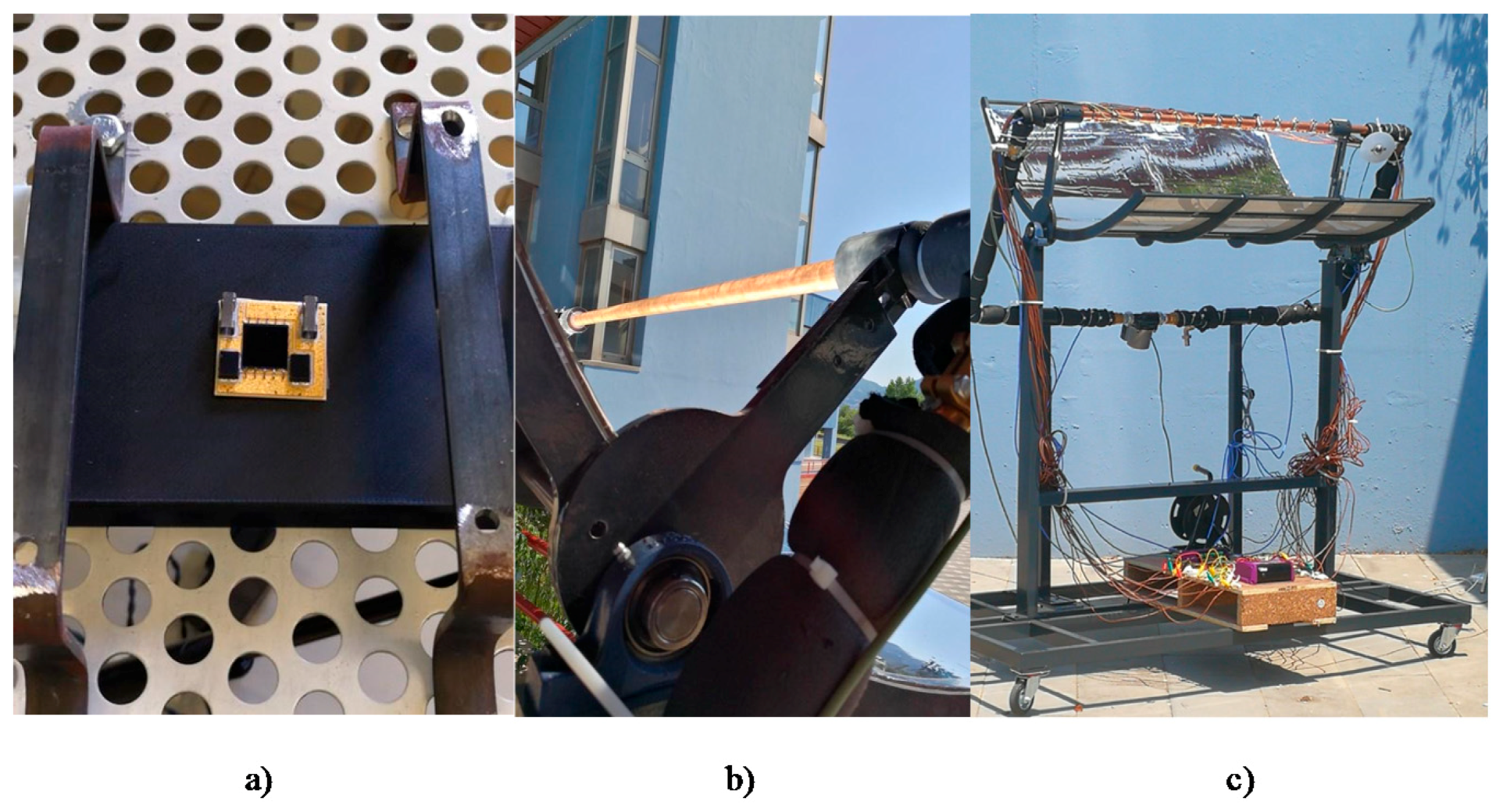
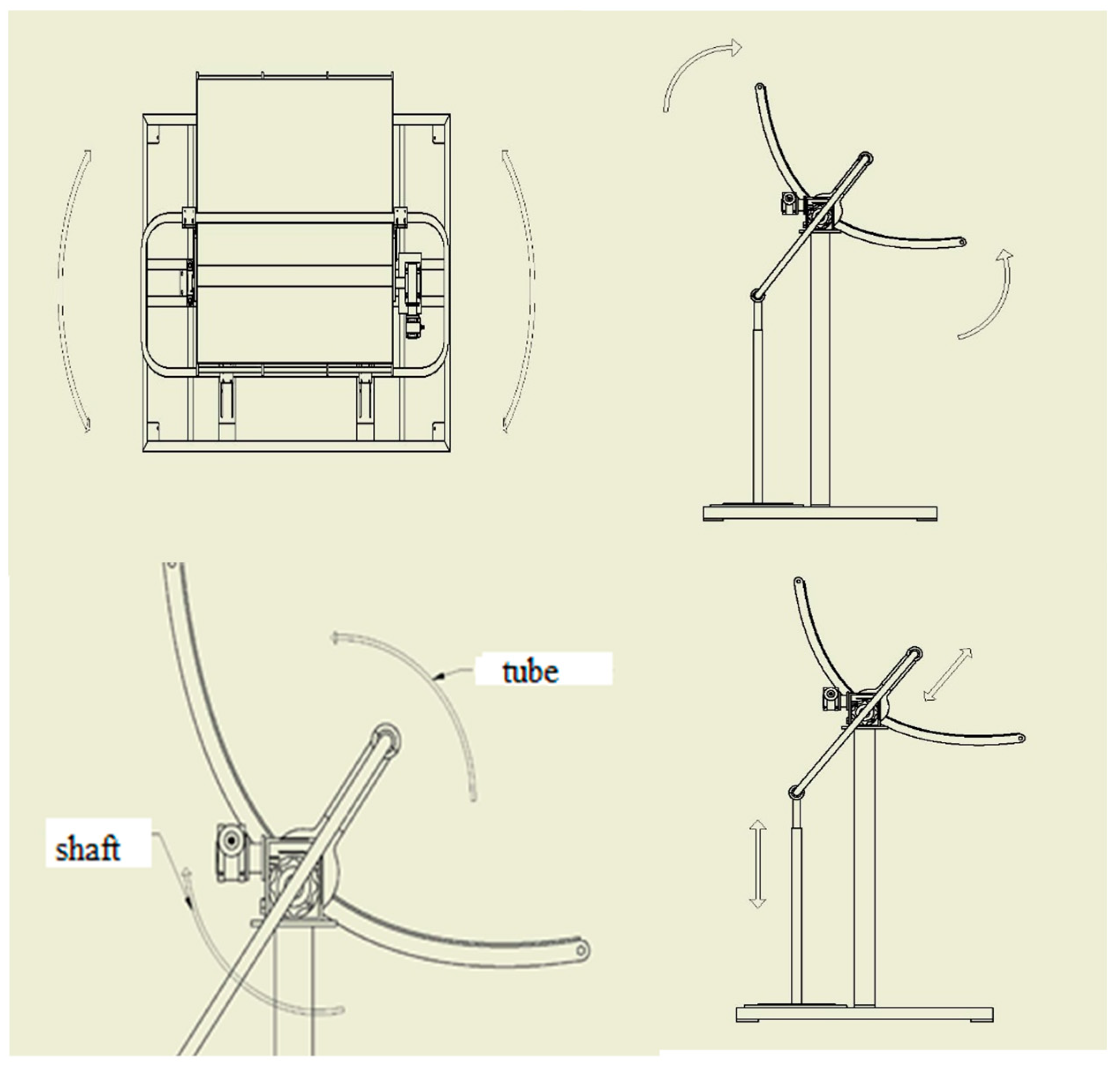
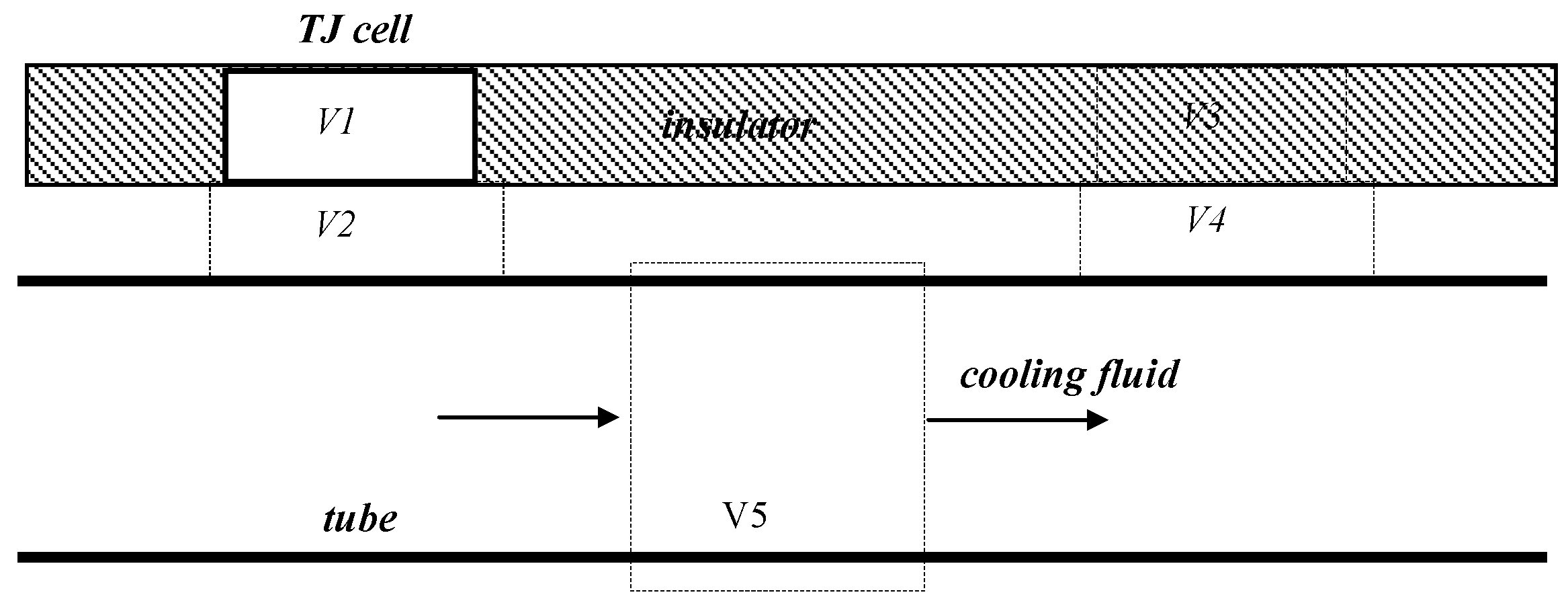


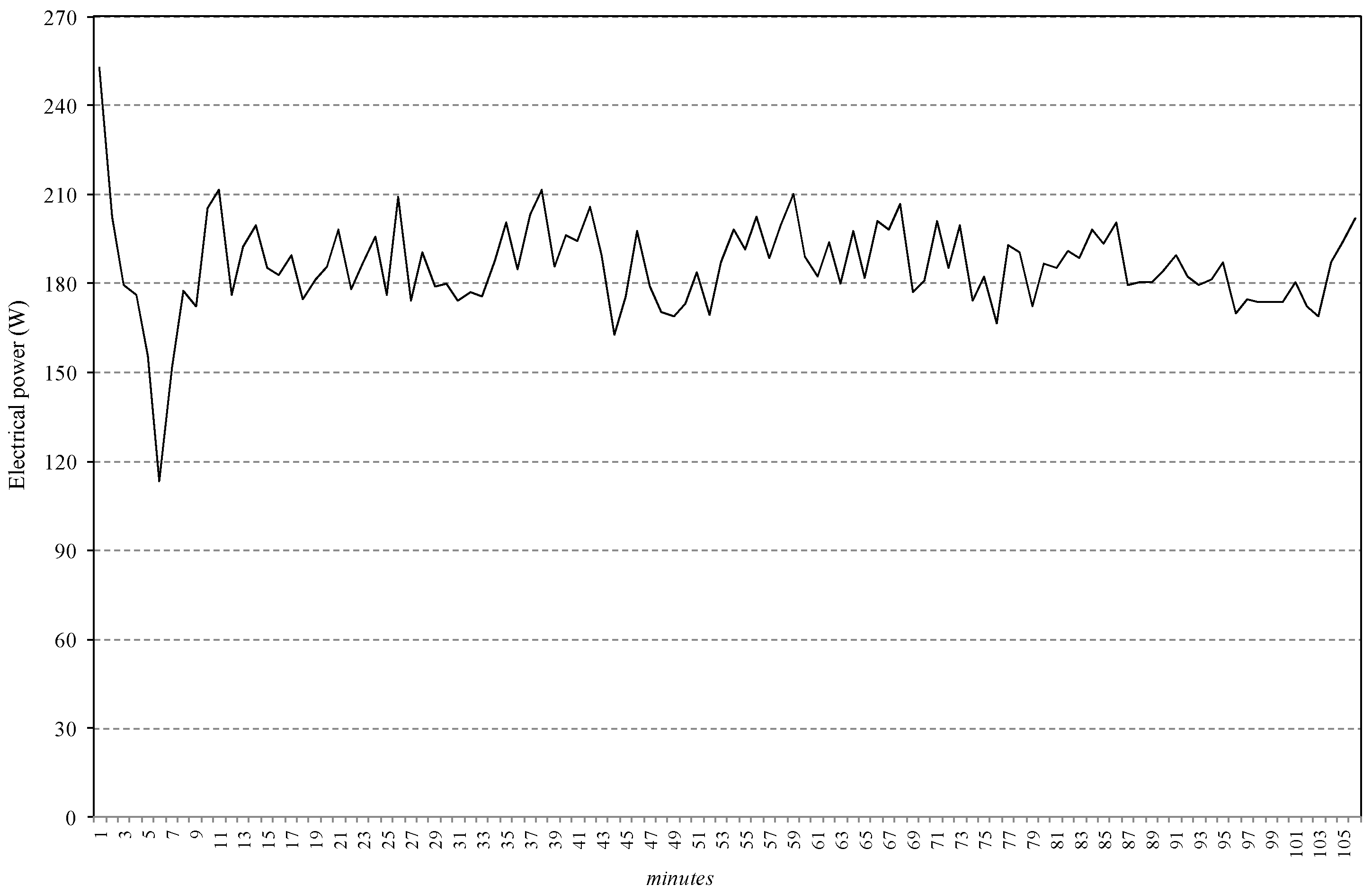

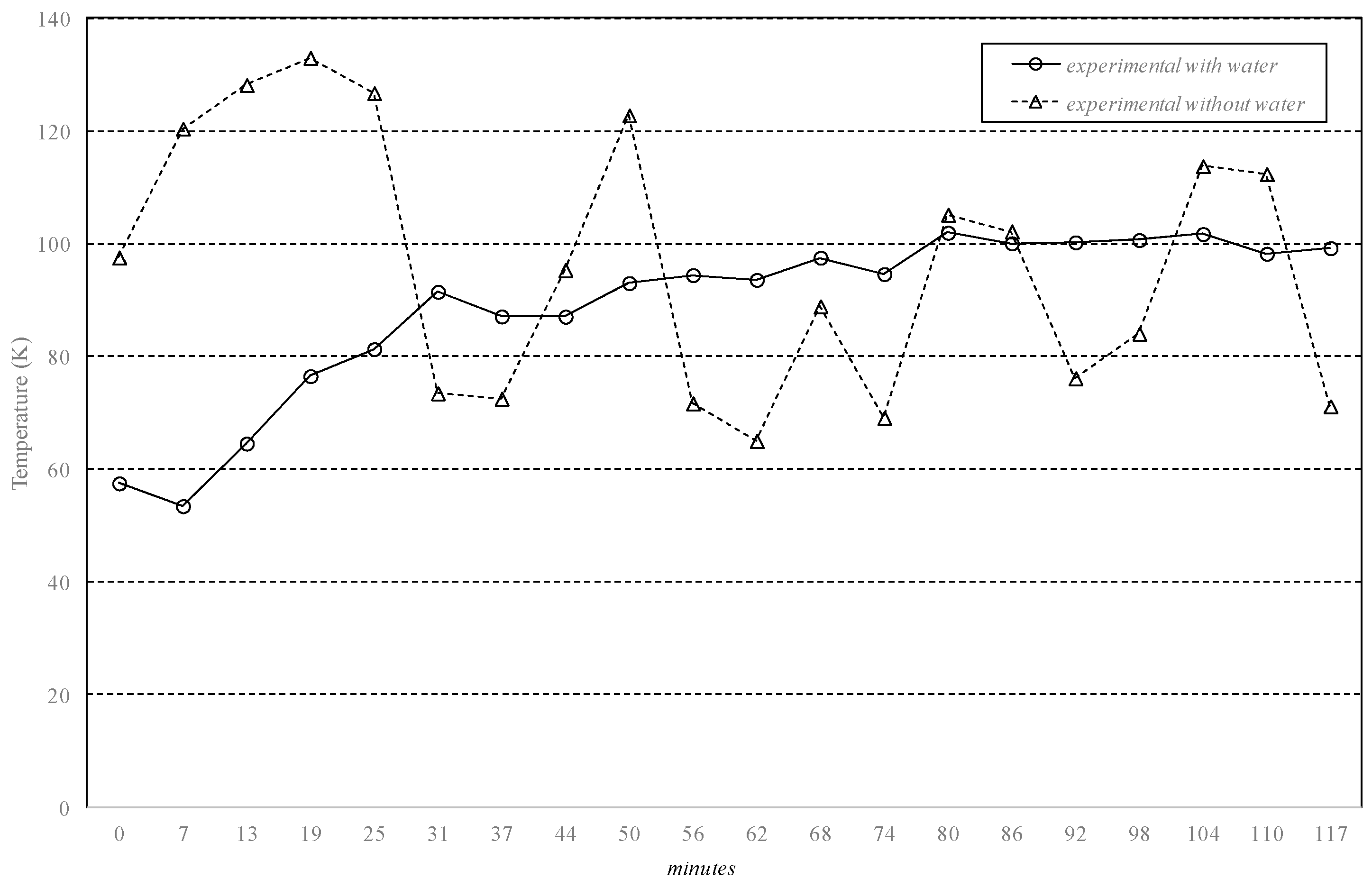
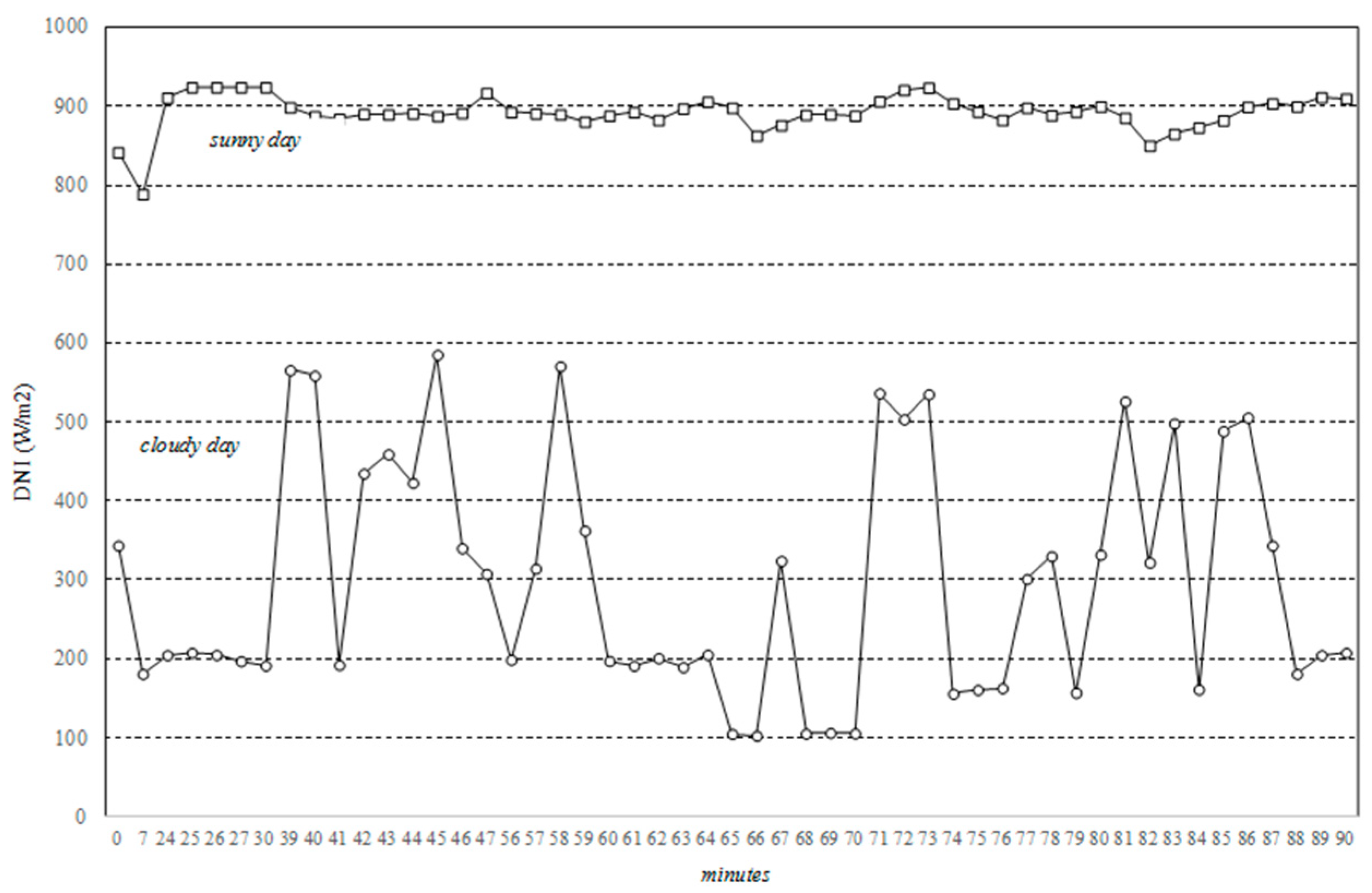
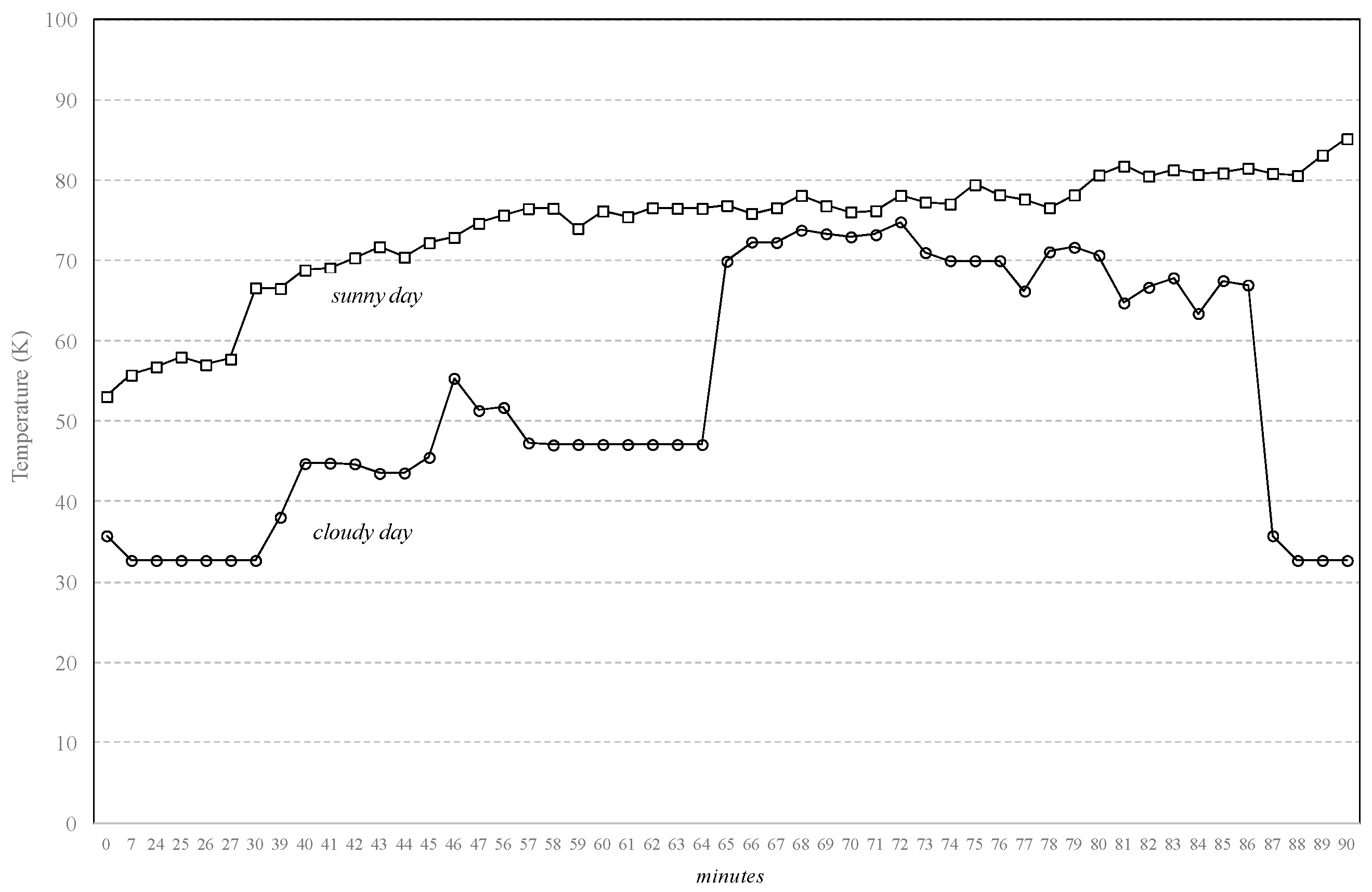

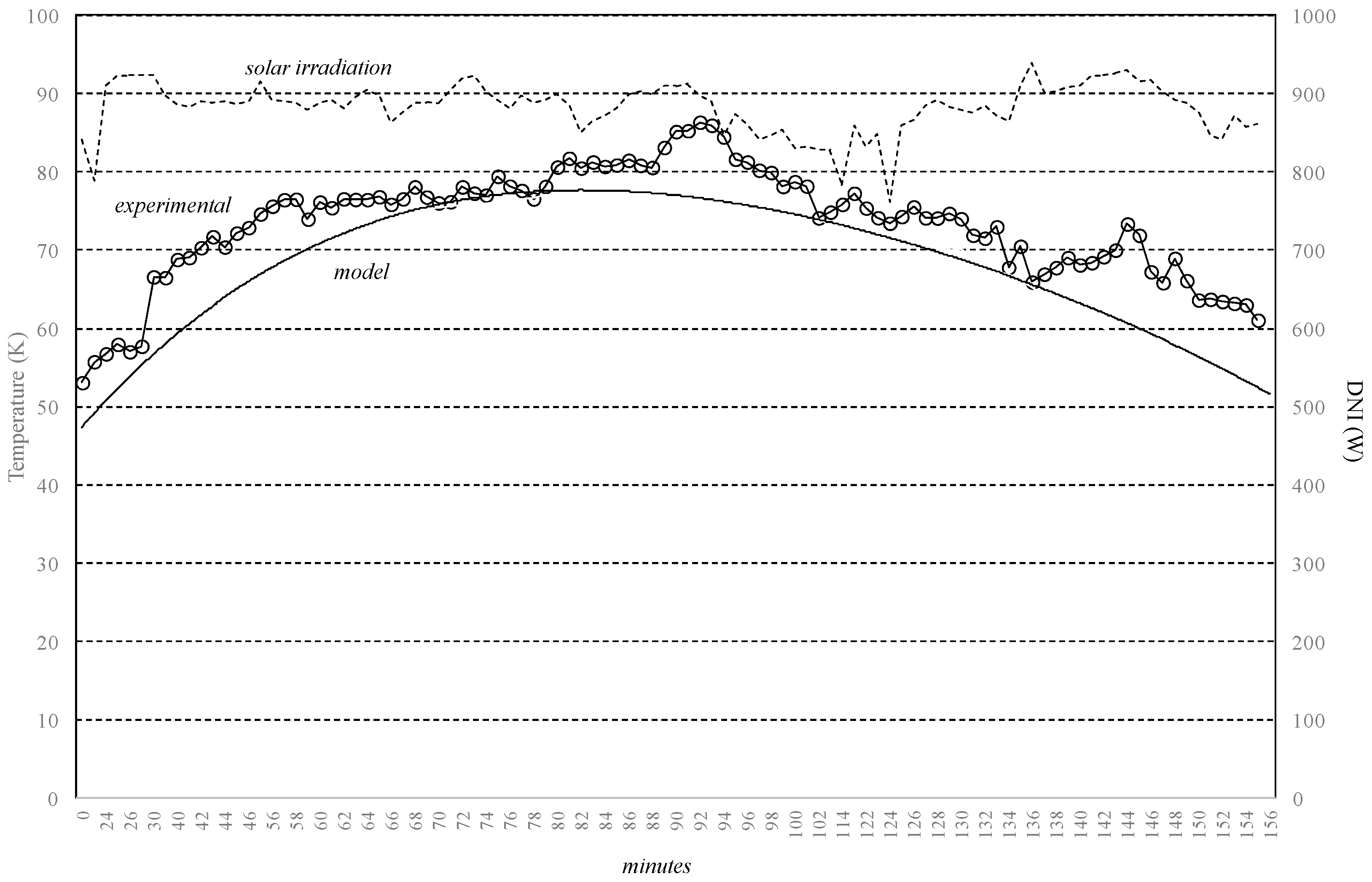

| Triple-Junction Cell | |
|---|---|
| parameter | value |
| material | InGaP/InGaAs/Ge |
| dimensions | 1.0 cm × 1.0 cm |
| reference efficiency ηr (at 298 K, 50 W/cm2) | 38.7% |
| temperature coefficient (σt) | −0.04%/K |
© 2018 by the author. Licensee MDPI, Basel, Switzerland. This article is an open access article distributed under the terms and conditions of the Creative Commons Attribution (CC BY) license (http://creativecommons.org/licenses/by/4.0/).
Share and Cite
Renno, C. Experimental and Theoretical Analysis of a Linear Focus CPV/T System for Cogeneration Purposes. Energies 2018, 11, 2960. https://doi.org/10.3390/en11112960
Renno C. Experimental and Theoretical Analysis of a Linear Focus CPV/T System for Cogeneration Purposes. Energies. 2018; 11(11):2960. https://doi.org/10.3390/en11112960
Chicago/Turabian StyleRenno, Carlo. 2018. "Experimental and Theoretical Analysis of a Linear Focus CPV/T System for Cogeneration Purposes" Energies 11, no. 11: 2960. https://doi.org/10.3390/en11112960
APA StyleRenno, C. (2018). Experimental and Theoretical Analysis of a Linear Focus CPV/T System for Cogeneration Purposes. Energies, 11(11), 2960. https://doi.org/10.3390/en11112960





